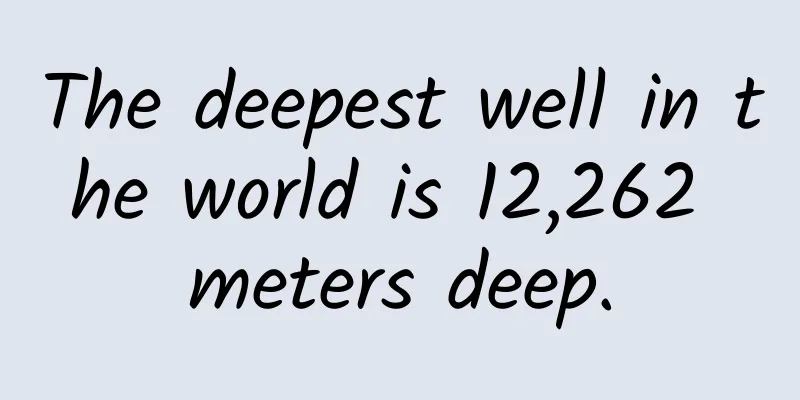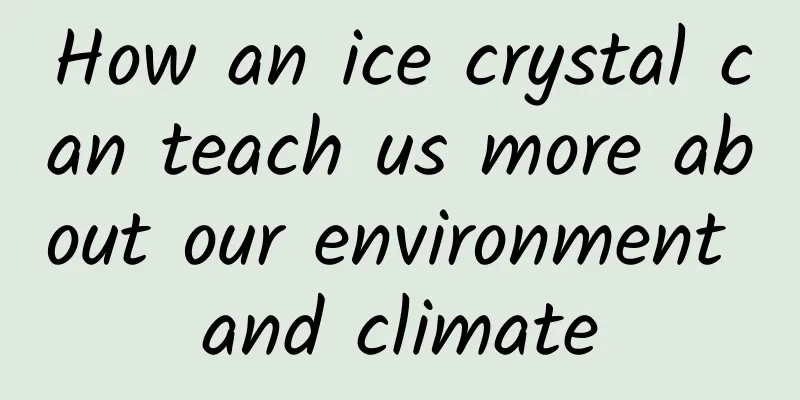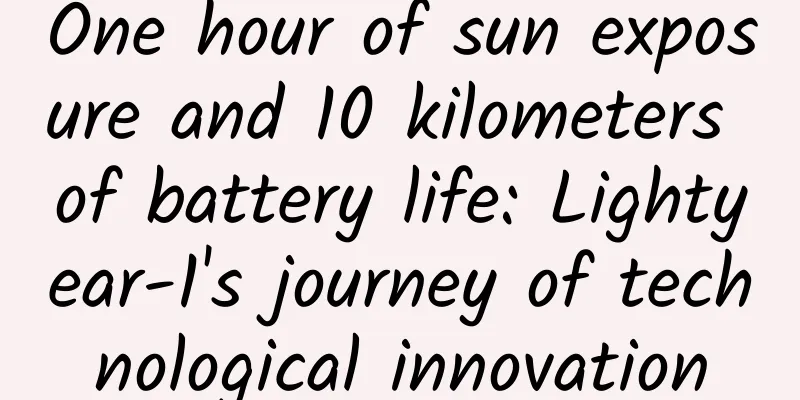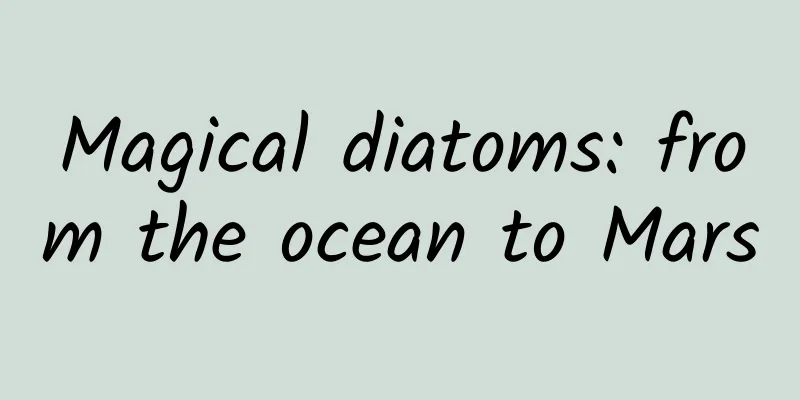The deepest well in the world is 12,262 meters deep.

|
On Russia's Kola Peninsula, in the wilderness near the Norwegian border, stands an abandoned scientific research station from the Soviet era. In the middle of the crumbling building, a heavy, rusty manhole cover is embedded in the concrete floor, with a circle of bolts firmly nailed on it, as if sealing some unknown secret. Abandoned scientific research station and sealed wellhead | amusingplanet.com Under the manhole cover is the famous Kola Superdeep Borehole (Кольская сверхглубокая скважина), which was originally just a scientific research drilling project, but became famous because of an urban legend: According to legend, the Kola Superdeep Borehole once drilled to a place 12,000 meters underground, where the excavation equipment vibrated violently. Scientists were surprised to find that there was a cavity inside the center of the earth. They used ultra-precision recorders to detect it, but heard screams similar to those of humans. They thought they had dug open the "Gate of Hell." There is even an article that records that "the scientific expedition team used a geological detector to conduct laser scanning of the borehole entrance, and after detection by an ultrasonic detector, the results showed that there were wailing and screaming and huge explosions inside the borehole. ... Then, Russia closed the Kola borehole again, sealed the entrance with reinforced concrete and molten steel, and set the surrounding 50 kilometers as a military restricted area and a no-fly zone." I first heard this story in a drilling engineering class at university, and then this mysterious borehole aroused my strong curiosity. Now, please follow me, walk into the ruins of the Kola Peninsula and learn about its legendary origin. Kola Superdeep Borehole The legend of the gate to hell is of course a fabrication. In fact, these records themselves have no basis. Their original source was a letter from a reader in a Finnish newspaper, but it became more and more incredible in the subsequent reprinting process. Of course, putting aside all these weird things, the Kola Superdeep Borehole in reality is also a legendary treasure drill. Kola Superdeep Borehole Superstructure | References [3] The Kola Superdeep Borehole is a scientific drilling project established by the Soviet Union in the Pechenga District of the Kola Peninsula in 1970. The Kola Superdeep Borehole was built mainly to study the oldest rocks on our planet and understand the geological processes that have occurred in them. Born during the Cold War between the United States and the Soviet Union, this well also carries the glorious mission of "bringing glory to the country". At that time, the two countries drilled into the deepest part of the earth, hoping that they could be the first to dig through the crust and reach the Mohorovici discontinuity, which is the interface between the crust and the mantle. Schematic diagram of the Mohorovich discontinuity The Soviet Union is so large, why choose the Pechenga area for drilling? In fact, this area has unique advantages. The Baltic shield, which covers the Kola Peninsula, Finland, Sweden and Norway, is one of the oldest geological regions in Europe, and Pechenga happens to be part of this shield. Here, water, wind and glaciers have eroded sediments covering ancient layers hundreds of millions of years old, allowing us to drill 15 kilometers deep here and see layers that are usually hidden in the continental crust at a depth of 25 kilometers or more. Location of the Kola Superdeep Borehole | mapsofworld.com In 1965, the project leader found a suitable drilling site. After five years of construction and preparation, the construction and installation of all drilling facilities were completed, and the industrial park and residential construction were completed. In 1970, an engineering feat in human history slowly unfolded within the Arctic Circle. Heading to the mantle In 1970, in order to commemorate the 100th anniversary of Lenin's birth, the Kola Superdeep Well was officially drilled. This was a vigorous scientific research project at the time. The entire research plan was carried out under the direct leadership of the former Soviet Ministry of Geology, and only a very small number of scientists among the thousands of scientific researchers were able to participate on site. All personnel involved in the drilling work were allocated an apartment in Moscow, and their monthly salary during the work period reached the annual salary of a university professor. 16 laboratories were set up at the drilling site to study the core. The Soviets used the Uralmash-4E series drilling rig to complete the first phase of drilling. The design drilling range was 5,000 meters, but the actual drilling depth reached 7,263 meters. This became the deepest record reached by the equipment, and also made the Kola Superdeep Borehole the deepest borehole in Europe at the time. During the second phase of drilling, the technical team dismantled the old drilling rig and used the unique Uralmash-15000 device to finally reach 10,636 meters under extreme conditions of high temperature and high pressure at the bottom of the well. On June 6, 1979, the Kola Superdeep Well broke the previous record of 9,583 meters held by the Bertha Rogers Superdeep Well in Oklahoma, USA, and officially became the deepest superdeep well in the world at that time. The Kola Superdeep Borehole reached 9,584 meters. Became the deepest borehole in the world at that time | References [3] Drilling progressed rapidly. In 1983, the well reached 12,000 meters, surpassing the world's deepest Mariana Trench. In order to prepare for the International Geological Congress held in Moscow in 1984, drilling work was stopped for about a year, and this idle period may have laid the hidden dangers for the subsequent accidents: in September 1984, after drilling to 12,066 meters, a 5,000-meter drill string broke and remained in the borehole. Later drilling work could only be restarted from a depth of 7,000 meters. In 1983, the Kola Superdeep Borehole reached 12,000 meters | References [3] In 1989, the Kola Superdeep Borehole reached its maximum depth of 12,262 meters for the first time. The staff optimistically predicted that the depth of the borehole would reach 13,500 meters in 1990 and 15,000 meters in 1993. But they soon discovered that the temperature of the crust at this depth was higher than the expected 100°C, reaching 180°C. At this temperature, the equipment was severely damaged, and it was no longer feasible to drill deeper. So the drilling work was stopped in 1992. The official reason for stopping the drilling was insufficient funds. It took a full decade to make progress from 12,000 meters to 12,262 meters, a short distance of 262 meters. Core samples taken from the Kola Superdeep Borehole in the 1980s | amusingplanet.com Although drilling stopped in 1992, research on the Kola Superdeep Borehole continued for several years until funding ran out in 2006. In 2008, the site was abandoned, the Kola Superdeep Borehole was firmly sealed, and a legend finally came to an end. Was the Kola Superdeep Borehole a success? Since the Kola Superdeep Borehole has drilled so deep, has it fulfilled its original mission and successfully reached the Moho? The answer is very regrettable. Not only has it not, it has fallen short by a lot, reaching only 1/3 of the way down the Baltic Shield. Let's use a picture to illustrate this. Diagram of the Earth's interior layers | Wikipedia Generally speaking, the thickness of the earth's crust is in the range of 5-70 kilometers. The thickness of the oceanic crust is relatively small, about 8 kilometers, and the thickness of the continental crust is 20-70 kilometers. Therefore, even if we calculate the thinnest continental crust, the Kola Superdeep Borehole has only drilled halfway through, not to mention the thicker parts. And according to the average radius of the earth, 6,371 kilometers, the Kola Superdeep Borehole has only drilled 0.2%, which is really insignificant. Seeing this, you may also ask this question: Since the continental crust is so thick and the oceanic crust is so thin, why not drill ultra-deep holes in the oceanic crust? Drilling ultra-deep holes in the ocean crust How could the researchers fail to think of such a simple question? In fact, before the Kola Superdeep Borehole project was launched, the United States had already carried out the "Moho Project" offshore, also to drill to the Moho surface. The Moho Project was originally planned to be carried out in three phases. However, due to a series of problems such as technology, management and funding, the plan was aborted after only the first phase. Drilling ship CUSS I used for the first phase of Project Moho | Wikipedia.org In the end, the project only achieved a drilling depth of 183 meters below the seafloor, but it cost $57 million, which was undoubtedly a huge sum of money in 1966. In the words of a geologist at the time, this project was equivalent to standing on a tall building holding a thin and long dry noodle and drilling a hole towards the asphalt road below. From this, we can also imagine how much manpower, material resources and financial resources were spent on the Kola Superdeep Borehole to drill to 12,262 meters. What have scientists discovered? The diameter of the Kola Superdeep Borehole is only about 20 centimeters, but it has helped us peek into the colorful underground world, and scientists have even observed life activities 2 billion years ago. They found tiny plankton fossils 6 kilometers below the surface, which were preserved intact in the high temperature and high pressure environment underground. Deep in the well, scientists unexpectedly discovered traces of water. They speculated that this was water directly generated from hydrogen and oxygen in minerals deep in the earth's crust, which could not reach the surface due to a layer of impermeable rock. According to the official website, the gold content in the core of the 9-12 km strata reached 4 grams per ton, which has met the requirements for commercial mining. Although the exploration process of the Kola Superdeep Well is completely opposite to the direction of the space race, the rocks obtained by scientists from the 3 km depth of the Kola Superdeep Well are surprisingly the same in composition as the lunar soil collected by the Soviet lunar rover. Core from SG-3 borehole at 12,260 meters underground | References [3] In fact, today, the depth record of the Kola Superdeep Borehole has been broken by some "rising stars". In 2008, Qatar's Ashoshin oil well reached 12,289 meters; in 2011, Russia's Odoptu OP-11 oil well in Sakhalin Island reached 12,345 meters; in 2012, ExxonMobil's Z-44 Chayvo oil well reached 12,376 meters. However, these oil wells are only longer in total length, and they also have a certain horizontal displacement. Calculated by the actual vertical depth, the Kola Superdeep Borehole SG-3 is still the man-made structure that reaches the deepest part of the earth, and it is also the deepest well in the world that is drilled purely for scientific research purposes. References [1]http://www.bbc.com/future/story/20190503-the-deepest-hole-we-have-ever-dug [2] https://en.wikipedia.org/wiki/Kola_Superdeep_Borehole [3] http://superdeep.pechenga.ru/ [4] https://en.wikipedia.org/wiki/Structure_of_the_Earth [5] Andrei, Mihai (21 August 2018). "What are the layers of the Earth?". ZME Science. Retrieved 28 June 2019.[6]http://www.021diao.com/article/4939.html [7] https://en.wikipedia.org/wiki/Project_Mohole [8] Alan Bellows (5 March 2007). "The Deepest Hole". Damn Interesting. Retrieved 27 December 2014. [9] GJ MacDonald (1988). "Major Questions About Deep Continental Structures". In A. Bodén and KG Eriksson (ed.). Deep drilling in crystalline bedrock, v. 1. Berlin: Springer-Verlag. pp. 28–48. ISBN 978-3-540-18995-4. [10]https://www.atlasobscura.com/places/kola-superdeep-borehole Author: The Other Side of the Wind Editor: Dalin |
<<: Why do people shiver when it’s cold?
>>: How to restore physical strength during the recovery period? Expert answers!
Recommend
The "icebreaker" on the "Xuelong" is China's first female seafarer to cross the Arctic Ocean
On November 4, the first domestically built large...
Can people from other places enter Beijing during the 2022 Two Sessions? What are the regulations for traffic control into Beijing? Attached the latest news
This year's National People's Congress an...
Why are coffee stains always darker at the edges and lighter inside? There's an interesting scientific mystery behind it
In life, everyone has the experience of accidenta...
【Smart Farmer】Illustrated Book|Have you eaten crabs today?
Crabs are delicious and fun aquatic creatures. Th...
Fantastic mammatus clouds appear in the sky, people with claustrophobia should beware
Two days ago, a cloud appeared in the lead-gray s...
National Nutrition Week | These good dietary habits will help you eat healthily
May 15th to 21st is National Nutrition Week. How ...
We have many misunderstandings about addiction
In today's society, addiction is actually mor...
Tips for creating short video scripts
A script is the outline needed for shooting a sho...
Why do we like spicy food?
Most of the peppers we talk about now come from f...
This galaxy is "bombarding" another galaxy with plasma streams
A weird black hole is spewing plasma into a nearb...
Community Operation: How do I operate the community?
The essence of a community is connection. It is a...
Smart TVs are becoming a powerful engine for sales growth in the color TV market
In recent years, the frequency of color TV produc...
360: 2019 Intelligent Connected Vehicle Information Security Annual Report
The report reviews the development of information...
If a flamingo eats blue food, will it turn blue?
In the colorful natural world, many mysteries of ...









